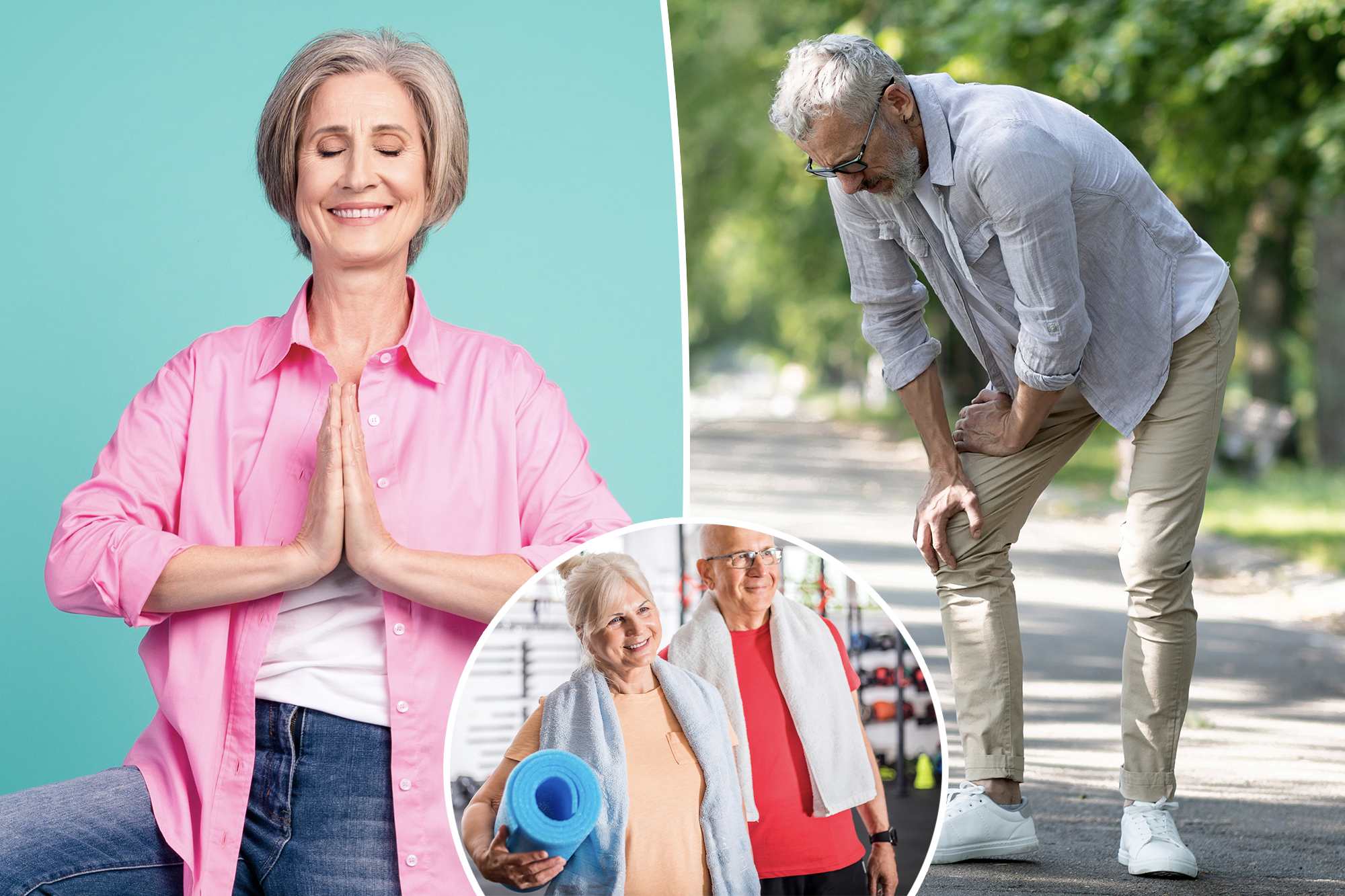
Can you stand the test?
Researchers from the Mayo Clinic have unlocked a simple, equipment-free way to determine biological age. The team says the amount of time you’re able to balance on one leg is a critical indicator of nerve, bone and muscle strength.
In the study, 40 healthy participants over the age of 50 (half under 65 and half over) underwent walking and balance tests and exercises that tested knee stiffness and strength. The study excluded obese individuals and those with pre-existing conditions that would affect their balance or gait.
Dr. Kenton Kaufman, Ph.D., senior author of the study and director of the Movement Analysis Laboratory at the Mayo Clinic, says: “Balance is an important measure because, in addition to muscle strength, it requires input from vision, the vestibular system. and somatosensory systems.”
For the balance tests, which lasted 30 seconds each, the subjects stood on force plates that measured how much energy they exerted on the ground. Participants were asked to do different stances: two feet on the ground with eyes open, two feet on the ground with eyes closed, standing on one leg using their non-dominant leg with eyes open and on their dominant leg with eyes open .
The results showed that standing on one leg, especially the non-dominant leg, showed the highest rate of decline with age.
With the non-dominant leg and with each passing decade, the amount of time an individual could stand decreased by 2.2 seconds. For the dominant leg, that time dropped by 1.7 seconds per decade.
The researchers noted that muscle mass decreases by up to 8% per decade after age 30, a rate that increases from 60 onwards.
The study authors hope this low-tech test will encourage people to test their bone strength independently and adjust accordingly. The team said, “This finding is significant because this measurement does not require specialized expertise, advanced tools, or techniques for measurement and interpretation. It can be performed easily, even by individuals themselves.”
Kaufman states that balance changes can equate to increased risk, “If you have poor balance, you’re at risk of falling, whether you’re moving or not. Falling is a serious health hazard with serious consequences.”
A 2022 study called the flamingo challenge found that middle-aged people who couldn’t balance on one leg for 10 seconds faced a dramatically higher risk of early death.
Dr. Claudio Gil Araújo, of the CLINIMEX Exercise Medicine Clinic in Rio de Janeiro and author of the flamingo challenge study, told CNN, “We regularly need … a one-legged stance, to move from a car, to to go up or down a step or ladder and so on. Not having this ability or being afraid to do so is likely to be associated with a loss of autonomy and, consequently, with less exercise, and the snowball starts.”
Experts agree that increasing our physical strength and flexibility by improving posture and balance can pave the way for aging well and maintaining independence in our later years.
Caroline Idiens, a UK fitness trainer specializing in home strength training, recently wrote in The Telegraph that balance is an indicator of physical well-being and cognitive health, “Balance taxes the brain because it requires your eyes, your vestibular system (which comes from the inner ears and detects movement), and the proprioceptors in your limbs that send signals to your brain, telling it what’s going on.”
Ines says the following time stamps for standing on one leg are a good indicator of overall health.
- If you are under 40, you must be able to stand on one leg continuously for 43 seconds.
- If you’re in your 40s, go for 40 seconds
- If you’re in your 50s, try 37 seconds
- If you’re in your 60s, aim for 18 to 19 seconds
- If you’re in your 70s, it’s 10 to 15 seconds
- If you’re 80 or older, aim for just over five seconds
Kaufman’s parameters are somewhat less demanding.
He says people can train and improve their balance. “By standing on one leg, you can train yourself to coordinate your muscles and vestibular responses to maintain proper balance. If you can stand on one leg for 30 seconds, you’re good.”
If you want to kick it up a notch, or so to speak, the so-called “old man’s balance challenge” has been extremely popular on social media. The premise is simple: stand on one leg and tie the shoelaces on the raised leg, or hold the position for the time it would take to tie the laces.
#test #biological #age #seconds
Image Source : nypost.com